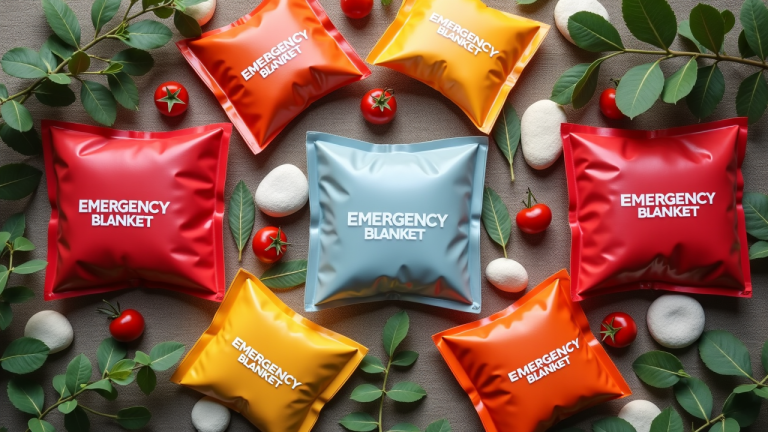Impact of Emergency Blankets
Real-Life Stories: The Remarkable Impact of Emergency Blankets in Crisis Situations
In times of crisis, simple tools can often make the difference between life and death. Among these, emergency blankets, also known as space blankets, stand out for their versatility and life-saving capabilities. This article delves into real-life stories where these unassuming pieces of technology have played a pivotal role in emergency response and individual survival, highlighting their importance in disaster preparedness and response strategies.
# The Science Behind the Blanket
Before exploring their practical applications, it’s essential to understand what makes emergency blankets vital in survival kits. Originally developed by NASA in 1964 for the US space program, these blankets are lightweight, compact, and made from a heat-reflective thin plastic sheeting. Their primary function is to reflect back up to 90% of a user’s body heat, crucial in preventing hypothermia—a common threat in many disaster scenarios.
# High Altitude Rescue: A Climber’s Lifeline
In 2015, a mountaineer climbing the rugged terrains of the Rocky Mountains found himself unexpectedly caught in a severe snowstorm. With temperatures plummeting rapidly, his risk of hypothermia increased by the minute. Fortunately, he had an emergency blanket in his backpack. By wrapping himself in it, he was able to reflect his body heat, staving off hypothermia until rescue teams arrived. This incident not only underscored the blanket’s value in personal survival kits but also highlighted how crucial quick thinking and preparedness can be.
# Urban Disaster: Survival in the Rubble
The utility of emergency blankets extends beyond natural wilderness settings. In 2011, during the catastrophic earthquake in Japan, numerous survivors were trapped under debris with limited access to resources. Emergency teams distributed space blankets among the victims to help maintain their body temperatures as they awaited more comprehensive medical assistance. One survivor recounted how the blanket not only provided warmth but also gave her a sense of security—a small yet significant comfort amid chaos.
# Marathon Runners: Preventing Post-Race Hypothermia
Emergency blankets are also commonly seen at the finish lines of marathons. After completing a race, athletes’ body temperatures can drop rapidly due to exhaustion and sweat evaporation in cooler climates. Here, emergency blankets serve an essential role in helping runners maintain their body heat as they recover from the physical exertion. This preventive use in sports showcases the blanket’s versatility and its critical function in less obviously perilous situations.
# Humanitarian Aid: Essential Supplies for Refugees
In crisis zones worldwide, whether due to conflict or natural disasters, refugees often face harsh conditions with minimal shelter or heating options. Emergency blankets are regularly included in humanitarian aid drops. For example, during the Syrian refugee crisis, many displaced families received these blankets as part of their basic supplies when arriving at camps in Europe experiencing winter temperatures. The blankets’ lightweight nature makes them easy to distribute en masse and provides immediate relief from the cold.
# Fire Escapes: An Overlooked Use
Beyond thermal insulation, emergency blankets have another lesser-known application—protection against fire. Made from a material that reflects heat, these blankets can shield individuals from flames and radiant heat for short periods when escaping a fire scenario. This was dramatically demonstrated during a hotel fire in Dubai where evacuees used emergency blankets to cover themselves as they passed near high-temperature zones within the building.
# Conclusion: A Staple in Emergency Preparedness
These stories from around the globe illustrate not only the critical role of emergency blankets in various emergency scenarios but also highlight broader lessons about preparedness. Whether for individual adventurers, large-scale public events, or humanitarian crises, the inclusion of this simple tool in safety planning significantly enhances survival prospects.
As climate change increases the frequency and intensity of natural disasters, and urban populations continue to grow, understanding and integrating basic protective measures like emergency blankets into emergency management is more important than ever. They are a prime example of how basic technology can provide significant benefits during emergencies—proving that sometimes the simplest solutions are the most effective.






